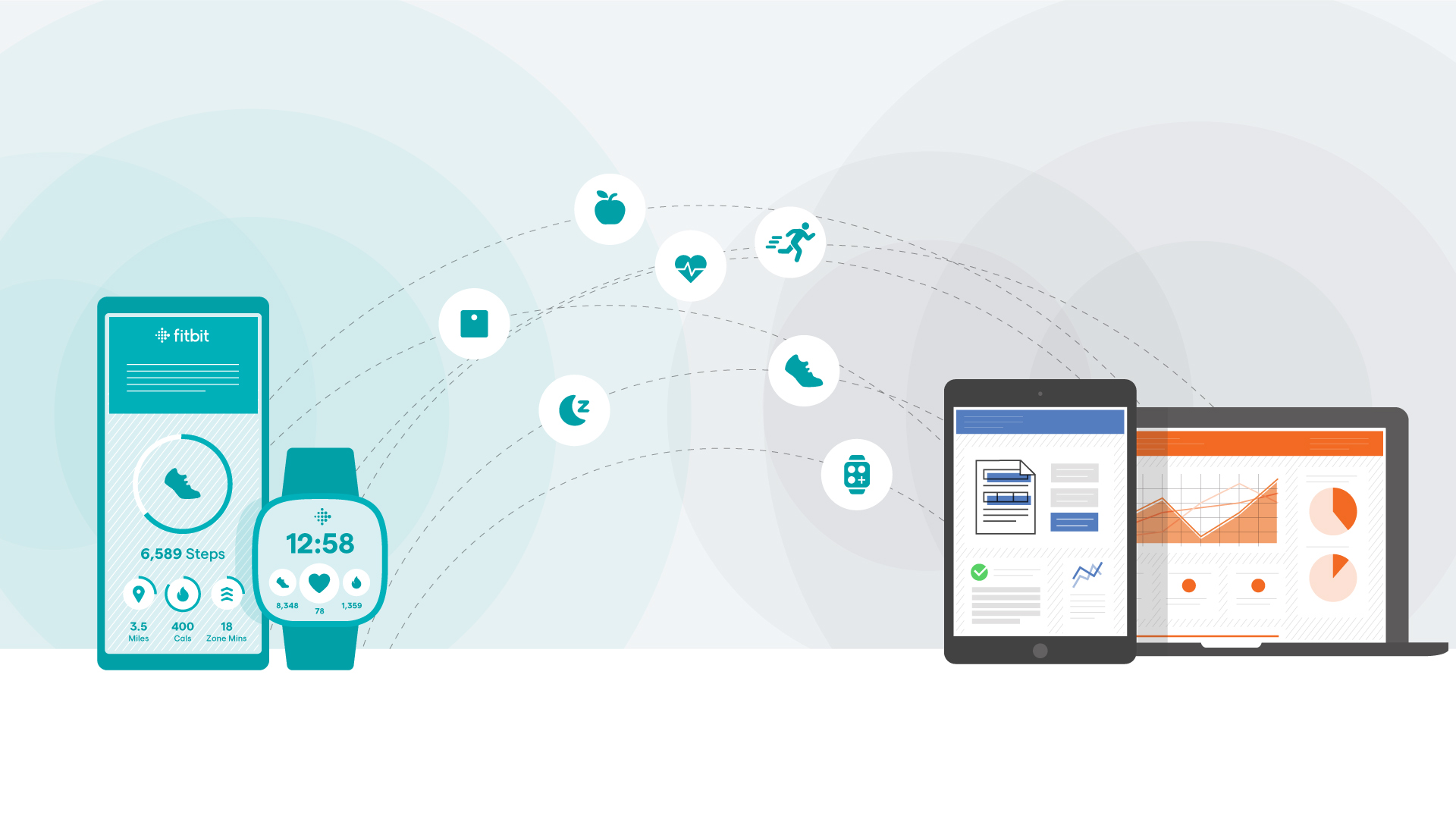Help Enhance Population Health with Data from Fitbit Devices
Over the years, Fitbit has helped population health managers address critical challenges they face with Fitbit devices that build excitement, drive engagement, and spur healthy behavior change.
But creating effective population-level programs requires collecting the right data and putting it into the right context.
That’s a lot of data, and chances are, you’re not a data scientist!
Personalized insights at scale
That’s where Fitbit’s Web API comes in. We give individuals the information they need to make healthy behavior changes while giving population health managers the ability to understand, and act on, real-world health information.
Our Web API is designed to give developers the ability to quickly and easily leverage participants’ user data — all accessible in one simple tool. This can help streamline the end-to-end process for population health teams and users alike, helping to increase participation rates among users and improve the quality of data collected.
High quality data that’s easy to access and understand is actionable data – giving your organization the power to build programs, outreach, and initiatives that contribute to the overall health and wellbeing of your population.
In addition to the activity, heart rate, and sleep data already available through our Web API, we’ve recently expanded our offerings to include the following newly available data points:
- Heart Rate Variability (HRV)
- Oxygen saturation (SpO2)
- Breathing Rate
- Skin Temperature
- Sleep Logs
- Cardio Fitness Score
- Active Zone Minutes (AZM)
- Electrocardiogram (ECG)
How do these new metrics help your population build healthier habits at scale?
Let’s take a look at how each of these new data points can help you better understand the health of your population, evaluate the impact of an intervention, monitor progress, enhance chronic disease management programs, and much more.
Heart Rate Variability
We use a common formula called RMSDD (Root mean square of the successive differences) to determine HRV from users’ heart rate data. The HRV provides the RMSDD between heart beats during sleep, measuring variability in the user’s heart rate in milliseconds. Only sleep records greater than three hours are considered.
SpO2
Oxygen saturation (SpO2) is a measurement of how much oxygen blood is carrying as a percentage of the maximum it could carry (high and low scores can indicate a medical issue). Fitbit devices have red and infrared sensors that can estimate SpO2 during sleep. Only sleep records greater than three hours are considered here as well. At this time, Fitbit devices do not measure SpO2 levels <80%.
Breathing Rate
This measurement captures a user’s average breaths per minute during sleep. Only sleep records greater than three hours are considered. Factors that can impact breathing rate include age, gender, weight, lung and heart conditions, anxiety, and fever.
Temperature
Our temperature measurement returns a user’s core and skin temperature. Note that while skin temperature is recorded by the Fitbit device automatically, core temperature must be logged manually in the Fitbit app.
Sleep Logs
Fitbit sleep logs return information about the source of a sleep log, e.g., if sleep was recorded automatically by the Fitbit device, or if a user manually recorded their sleep in the Fitbit app.
Cardio Fitness Score
Fitbit devices estimate a users’ VO2 max and return the optimum rate at which the user’s heart, lungs, and muscles can effectively use oxygen during exercise. Cardio Fitness Score is determined by resting heart rate, age, gender, weight, and other personal information for each user.
Active Zone Minutes (AZM)
Active Zone Minutes (AZMs) are a measure of time spent in elevated heart rate zones, including Fat Burn, Cardio, and Peak zones. For each minute spent in the Fat Burn Zone, a user will earn 1 AZM, and for each minute spent in the Cardio or Peak Zone, a user will earn 2 AZMs. This will help you to determine not only if participants are active, but how active they are based on intensity of their activity every day.
Electrocardiogram (ECG)
The Fitbit ECG App, only available on some devices, is used to create and record an ECG when a user takes a 30-second reading, and can analyze the reading for signs of AFib.* Only a doctor can diagnose AFib, but the ECG app can let a user know if they have signs of the condition.
Taken together, these new data points open up a number of possibilities for population health managers and our clinical partners. By gaining insights into daily health metrics and trends over time – and putting them into context against normal ranges – you can develop guidance and initiatives that help your user base better understand and improve health and wellbeing. For more information on our APIs, check out these additional resources:
- Our Web API Dictionary provides information about all available Fitbit endpoints and corresponding device compatibility.
- Developer reference documentation is available in our Web API Reference.
Interested in using Fitbit devices for your population? Contact us here.
*The accuracy of the data collected and presented through the Fitbit Service is not intended to match that of medical devices or scientific measurement devices.
Review the Fitbit Web API User Data and Health Research Policy here. Please refer to the Fitbit Web API Health Research Policy help center article for more information.
